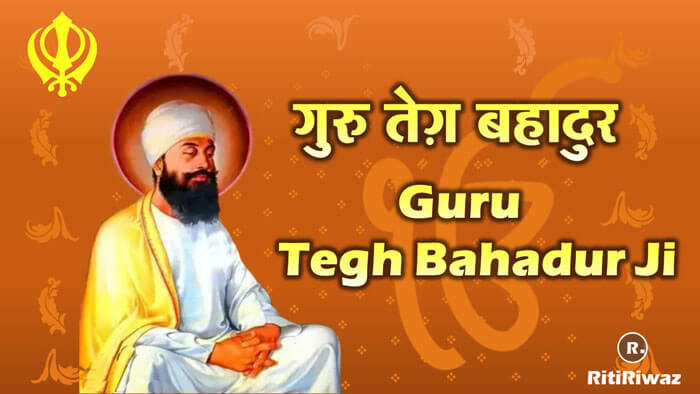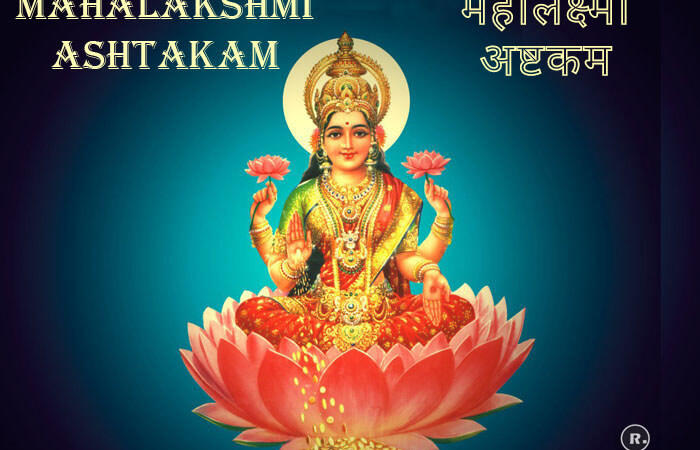Guru Tegh Bahadur (1 April 1621 – 11 November 1675)

Guru Tegh Bahadur (गुरू तेग़ बहादुर) was the ninth of ten Gurus in the Sikh religion, often venerated as the ‘Protector of Humanity’ (Srisht-di-Chadar) by the Sikhs. He had become Guru on 16 April 1664, following the footsteps of his grand-nephew and the eighth Guru Har Krishan Ji. He strongly opposed the conversion of Kashmiri Pandits and other Hindus into Muslims. He was beheaded in 1675 by the order of Mughal Emperor Aurangzeb in Delhi for refusing to accept Islam.
He was a spiritual magnet, Guru Tegh Bahadur attracted followers in thousands wherever he traveled. he dedicated his life to the service of others. The Guru Granth Sahib contains 115 poetic hymns that were composed by him. His Saloks (Mahal 9) near the end of the Guru Granth Sahib are extremely popular.
Fast Facts
- Name: Tyag Mal
- Famous name: Tegh Bahadur (Mighty of the Sword)
- Birth: 1 April 1621
- Place of Birth: Amritsar
- Father: Guru Hargobind
- Mother: Mata Nanaki
- Sister: Bibi Veero Ji
- Marriage: 3 February 1633
- Wife: Mata Gujri
- Children: Guru Gobind Singh
- Death: 11 November 1675
- Death Place: Delhi
- Indian spiritual teacher: Ninth Guru of Sikh
- Spiritual successor: Guru Gobind Singh
Early Life
Guru Tegh Bahadur was the fifth and the youngest son of Sikh Guru Hargobind and Bibi Nanki. He was born as Tyaga Mal on 1st April 1621 (Vaisakh Vadi 5, (5 Vaisakh), Bikrami Samvat 1678) in Amritsar. He had four brothers Baba Gurditta Ji, Baba Suraj Mal Ji, Baba Ani Rai Ji, Baba Atal Rai Ji, and one sister Bibi Veero Ji.
From a young age, Tegh Bahadur was trained in the martial arts of swordsmanship and horse riding as well as religious training by the wise Baba Buddha and Bhai Gurdas. The name Tegh Bahadur (Mighty Of The Sword), was given to him by Guru Hargobind Sahib Ji after he had shown his valor in a battle with the Mughals. The horrific bloodshed on the battlefield had a profound impact on the reclusive mind of Guru Tegh Bahadur Ji and his mind turned towards spiritual contemplation.
Guru Tegh Bahadur was also an excellent warrior, thinker, and poet, who wrote a detailed description of the nature of God, mind, body, and physical attachments among other things spiritual. In 1633 he was married to Mata Gujri, and a son was born to Guruji in 1666 at Patna Sahib. Who became the tenth Guru- Guru Gobind Singh.
In 1640 Guru Hargobind moved to his ancestral village of Bakala with Tegh Bahadur and Gujri. Tegh Bahadur meditated at Bakala for about twenty years (1644-1664) and lived there with his wife and mother.
Guru Tegh Bahadur as the ninth guru
Guru Hargobind didn’t choose Tegh Bahadur as his successor as he had chosen the path of renunciation and meditation. Instead, he chooses his grandson, Guru Har Rai, as his natural successor and Guru Har Rai chooses his youngest son Guru Harkrishan as his successor. When Sri Guru Har Krishan Sahib Ji was in the last stage of the life and when asked for the next Guru, Baba Ji replied Baba Bakala, meaning his successor was to be found in Bakala.
All of a sudden there were around 22 imposters, claiming to be the true Guru in Bakala. But an incident helped the followers to find their ninth Guru. Makhan Shan Labana was a wealthy trader and during his tough days he prayed to Guru to help him steer from the storm and he would donate 500 Mohurs (coins) to the Guru in charity. He in search of the ninth Guru offers 2 gold coins to every Guru he met, believing that the right guru would know his silent promise of donating 500 coins.
He met many Guru who just accepted the 2 gold coins and bid him farewell, at last, he discovered Tegh Bahadur who also lived in Bakala. Labana gifted Tegh Bahadur the usual offering of two gold coins, and Tegh Bahadur blesses him and remarked his promise of donating 500 coins. Makhan Shah Labana now found his true Guru and ran upstairs and shouted “Guru ladho re, Guru ladho re” meaning “I have found the Guru, I have found the Guru“. After which in August 1664 Tegh Bahadur was anointed as the ninth Sikh Guru.
Travel and mission
Guru Tegh Bahadur visited many places to spread the religion throughout India. They reached Khiala (Khadal) from Anandpur Sahib via Kiratpur, Planting, Saifabad. While preaching here, Damdama saheb reached Kurukshetra. From Kurukshetra reached Kadamanakpur on the banks of the Yamuna and it was here that he saved Sadhu Bhai Malukdas. Guru Tegh Bahadur went to Prayag, Banaras, Patna, Assam, etc. areas where he did creative work for spiritual, social, economic, upliftment.
Share the knowledge of spirituality, religion. Criticized stereotypes, superstitions, and established new ideals. He also worked for the construction of wells, Dharamshala, etc. Guru Tegh Bahadur contributed 115 poetic hymns are in the text Guru Granth Sahib. He is accredited with composing various hymns which also include ‘Saloks’ or couplets at the end of ‘Guru Granth Sahib‘.
During the last period in Guru Ji’s life, Guru Ji founded a new town called Anandpur Sahib (City of Bliss) and went on missionary tours to UP and Bengal. The 9th Guru, Guru Tegh Bahadur was seated on the throne of the Great Baba Nanak from 1664 to 1675. Guru Tegh Bahadur had his son, Gobind Rai consecrated Guru and successor on 8th July 1675.
Joti Jot (Merging with God)
Aurangzeb forced Kashmiri Pandits to accept Islam, they came to Tegh Bahadur with a plea. Guru Tegh Bahadur stood by the Kashmiri Hindus who were being forced to forsake their religion by the Mughal administration. Guru Tegh Bahadur Ji told the pundits that you should go and tell Aurangzeb that if Guru Tegh Bahadur converted to Islam, after that we will also convert to Islam. And if you could not get Guru Tegh Bahadur to adopt Islam, then we also will not accept Islam. This enraged Aurangzeb and he ordered Guruji to be arrested and beheaded at Chandni Chowk in Delhi.
The Guru is also known as “Hind Di Chadar” i.e. “The Shield of India“, suggesting that he gave up his life to protect the religious freedom of non-Muslims in Mughal India. After the martyrdom of Guru Tegh Bahadur, his son Guru Gobind Rai was placed on the throne. Who became Guru Gobind Singh Ji, the tenth Guru of the Sikhs.
A gurudwara has been built in memory of Guru Tegh Bahadur at his martyr site, which is named Gurdwara Shish Ganj Sahib. Gurdwara Rakab Ganj Sahib, also in Delhi, is built on the site of the residence of Lakhi Shah Vanjara, a disciple of the Guru, who burnt his house in order to cremate the Guru’s body. There is another gurdwara, Gurdwara Sis Ganj Sahib at Ambala City where Bhai Jaita stopped for the night with Sri Guru Tegh Bahadur’s head. Guru Tegh Bahadur’s head was cremated by Guru Gobind Singh in Anandpur Sahib. There is another Gurdwara by the name of Gurdwara Sis Ganj Sahib, that marks the site where in November 1675 the head was cremated.
Shaheedi Diwas
Every year November 24 is celebrated as Shaheedi Diwas by the Sikh community to remember Guru Tegh Bahadur’s sacrifice to protect the faith, belief, and rights of the people. Guru Tegh Bahadur’s martyrdom was the first-ever martyrdom for human rights in the world.
Guru Tegh Bahadur Ji had a versatile personality, a warrior, a family man with social commitment, and a preacher of great understanding and vision. His martyrdom broke the myth of Aurangzeb’s religiosity.






